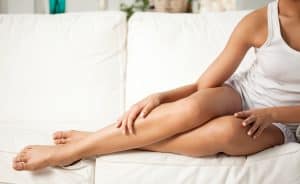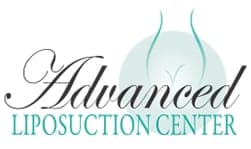Minimally Invasive Vein Treatments

Non-Invasive Treatments
If lifestyle changes and compression garments aren’t enough to eliminate the symptoms of your varicose veins, there are currently a number of medical procedures that can help.
Minimally Invasive Vein Treatments
At The Advanced Vein Center in Cranberry, Butler, and Bridgewater we focus on Minimally Invasive Vein Treatments. This typically includes some combination of the following, listed in order of most to least invasive:
- Radiofrequency (RF) Ablation. A single small incision is used to access the diseased vein. It is then sealed shut using precisely controlled heat. The blood is immediately rerouted to nearby healthy veins. RF Ablation is far superior to older techniques such as vein stripping.
- Endovenous Adhesives, a.k.a. “Vein Glue.” This minimally invasive technique accomplishes the same goal as RF Ablation. A small amount of medical adhesive is used to seal diseased veins shut. Blood is then naturally rerouted to nearby healthy veins.
- Microphlebectomy. This is the technical term for the removal of diseases surface veins, a.k.a. varicose veins. It is performed through small access incisions which typically don’t even require stitches.
- Sclerotherapy. An injection-based treatment. Specialty medications known as “sclerants” (scar producing agents) are used. These irritating solutions can be used to seal shut spider veins and other small problem vessels. The diseased veins are then reabsorbed into the body as part of the natural healing process.
- Laser Treatments. This is an alternate (and even less invasive) method of spider vein removal. Unfortunately, it is only effective on the smallest of spider veins and burst capillaries (small surface arteries).
Note that the above methods of treatment grant permanent results. It is certainly possible to develop additional vein disease at a later date. All treated veins, however, have been permanently sealed, removed, or otherwise destroyed. They can cause no further vein symptoms. In the days, weeks, and months following treatment a patient’s physical vein symptoms will resolve, often completely.
Why Do Veins Become Ill?
Varicose veins, spider veins, Restless Legs Syndrome (RLS), and other venous problems all have vein disease as their underlying cause. Insufficiency of the veins is another name for it. Vein reflux disease is yet another name for the same issue if you’re wondering what it is.
When veins are stressed owing to a variety of circumstances, vein disease develops. Persistent stress can cause vein valves to become damaged, making it difficult for the body to effectively pump blood back to the heart. Blood begins to collect in various parts of the body as a result. Most frequently, the lower limbs, including the legs, ankles, and feet, are impacted.
Many unpleasant and painful symptoms could be present if you have vein disease.
Leg swelling, cramps, itching, and tingling are the most typical ones. Venous insufficiency not only results in pain and suffering, but it can also lead to harmful health complications. They include the growth of venous ulcers and blood clots. These problems can be fatal for some people.
Thankfully, vein treatment can assist in minimizing or completely eliminating pain, discomfort, and the danger of catastrophic consequences.
Is Venous Insufficiency Dangerous?
Venous disease can result in circumstances that are potentially fatal. You are more likely to get: if you have venous insufficiency.
Blood stains
Blood clots develop when blood thickens and collects in one area. The two primary categories of blood clots are. The one that affects vein patients the most frequently is called superficial thrombophlebitis (ST). Pain, swelling, and redness are signs of ST. Even while ST is generally not seen to be harmful, it can nonetheless be serious and need treatment. ST may also make you more susceptible to deep vein thrombosis.
When your veins are stressed or hurt, deep vein thrombosis (DVT), a more serious type of blood clot, occurs.
How To Prevent Varicose Veins After Treatment
1. Exercise Regularly
Walking is the best workout for preventing varicose veins.
Yoga is also a viable choice. Many positions can be done in which your feet are higher than your heart. Headstands, shoulder stands, and Legs-Up-the-Wall Pose are all examples of inversions.
Yoga can also help stretch and tone your calves and hamstrings’ deeper muscles. The deep muscles can assist the vein valves to function properly to some extent.
Downward-Facing Dog Pose, most forward-bend positions, and sun salutations are all stretching and toning exercises.
2. Do Not Remain In Same Positions For Too Long
Today’s office employees are at a higher risk of developing or aggravating varicose veins.
Every half hour, remember to get up and walk for a few minutes, even if it’s just to the break room and back.
When you’re standing, your leg muscles are forced to transport blood toward your heart more than when you’re sitting.
If your job requires you to stand for long periods, schedule a similar break where you can sit.
3. Change Your Diet
Obesity is one of the top five causes of varicose veins. The additional pressure your veins must deal with as a result of the added weight puts a strain on them. That’s on top of all the other health problems
that people who are obese are putting themselves at risks for, such as type 2 diabetes and high blood pressure.
Unlike your genes, though, you can adjust your diet to improve your general health.
You may lose weight and keep your veins healthy and clear of varicose veins by making a few simple dietary and lifestyle changes.
Sugar, specifically processed sugar, is one of the most dangerous foods for your diet.
Sugar found naturally in fruits and vegetables can be beneficial to your health, but steer clear from manufactured sweets, which will cause your body to spin in all the wrong directions.
What types of vein issues can be treated with minimally invasive procedures?
Minimally invasive vein procedures can effectively treat varicose veins, spider veins, and chronic venous insufficiency (CVI). Varicose veins, which are enlarged, twisted veins often found in the legs, can be treated with endovenous laser therapy (EVLT), radiofrequency ablation (RFA), sclerotherapy, or ambulatory phlebectomy. Spider veins, which are smaller, superficial veins, respond well to sclerotherapy or laser therapy. Chronic venous insufficiency (CVI), a condition where blood pools in the veins due to weak valves, can also be managed with EVLT or RFA. These treatments help reduce symptoms like pain, swelling, and skin discoloration while improving circulation and appearance.
Does minimally invasive treatment have less side effects than highly invasive ones?
Yes, minimally invasive vein treatments generally have fewer side effects than highly invasive procedures. Since they don’t require large incisions or general anesthesia, the risks of infection, excessive bleeding, and significant scarring are much lower. Common side effects of minimally invasive treatments include mild swelling, bruising, temporary discomfort, and skin discoloration, which usually resolve quickly. In contrast, traditional vein surgeries, like vein stripping, often have longer recovery times, increased pain, and a higher chance of complications like nerve damage or deep vein thrombosis. Minimally invasive options are safer, more comfortable, and allow for a faster return to daily activities.
Do highly invasive treatments provide the most effective results? Or is it the same both type of treatments?
Highly invasive vein treatments, like vein stripping, were once the standard for severe varicose veins, but minimally invasive options now provide similar or even better results with fewer risks and shorter recovery times. Procedures like endovenous laser therapy (EVLT) and radiofrequency ablation (RFA) effectively seal off problem veins, allowing the body to absorb them naturally. These methods have high success rates, comparable to surgery, while being less painful and requiring minimal downtime.
